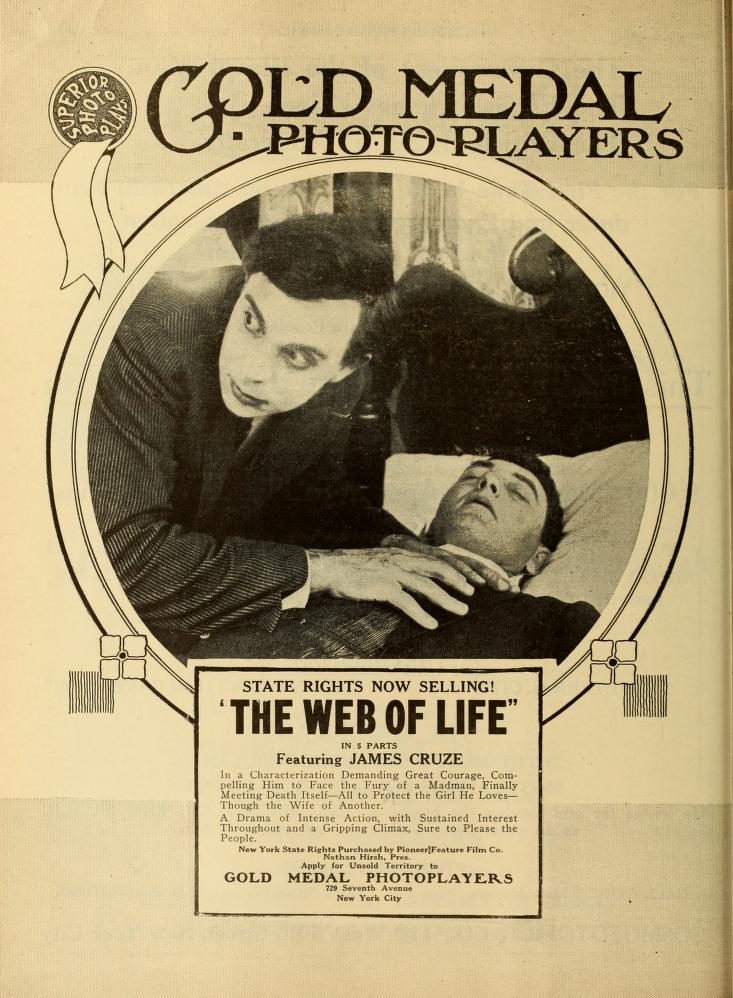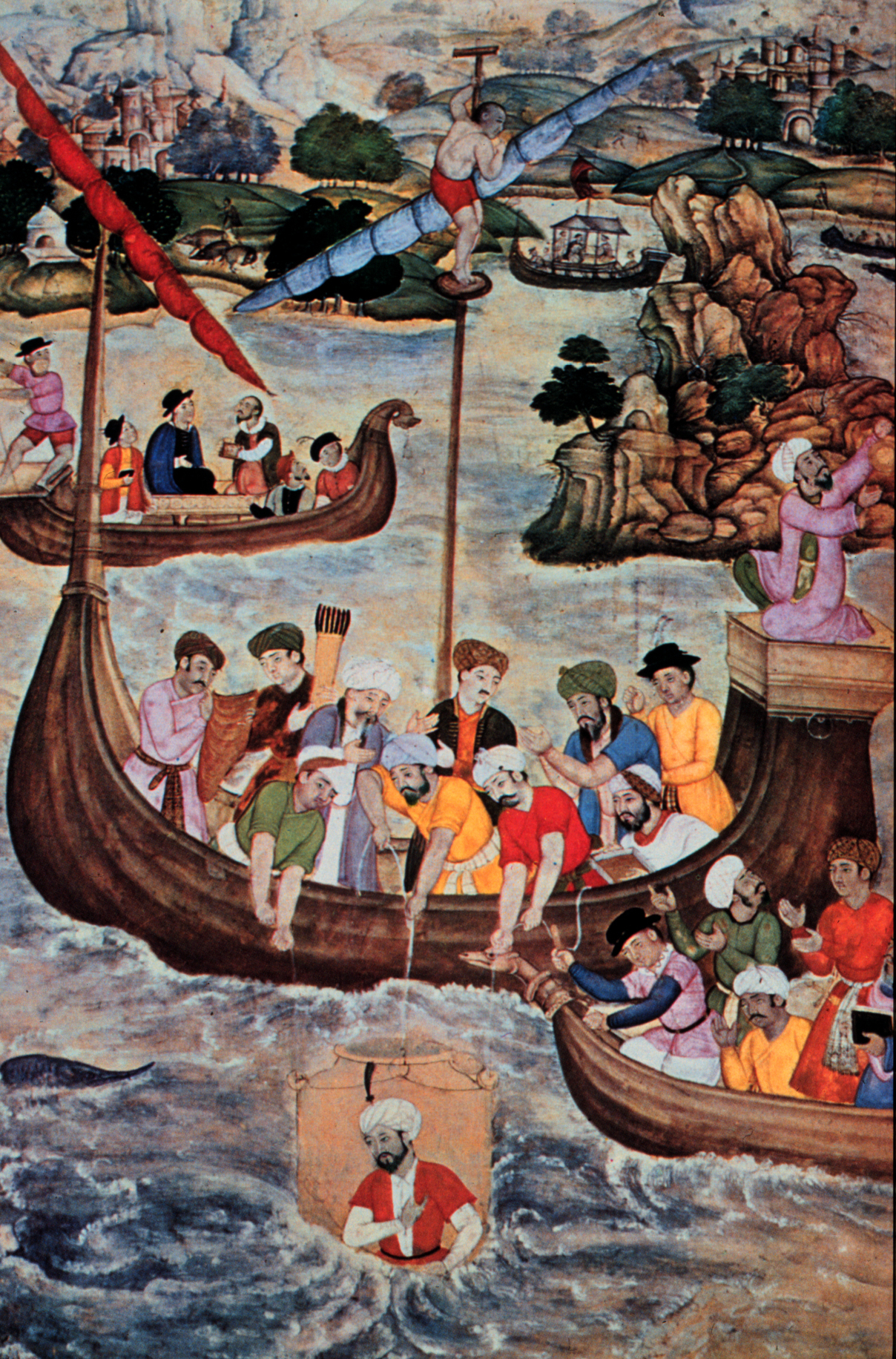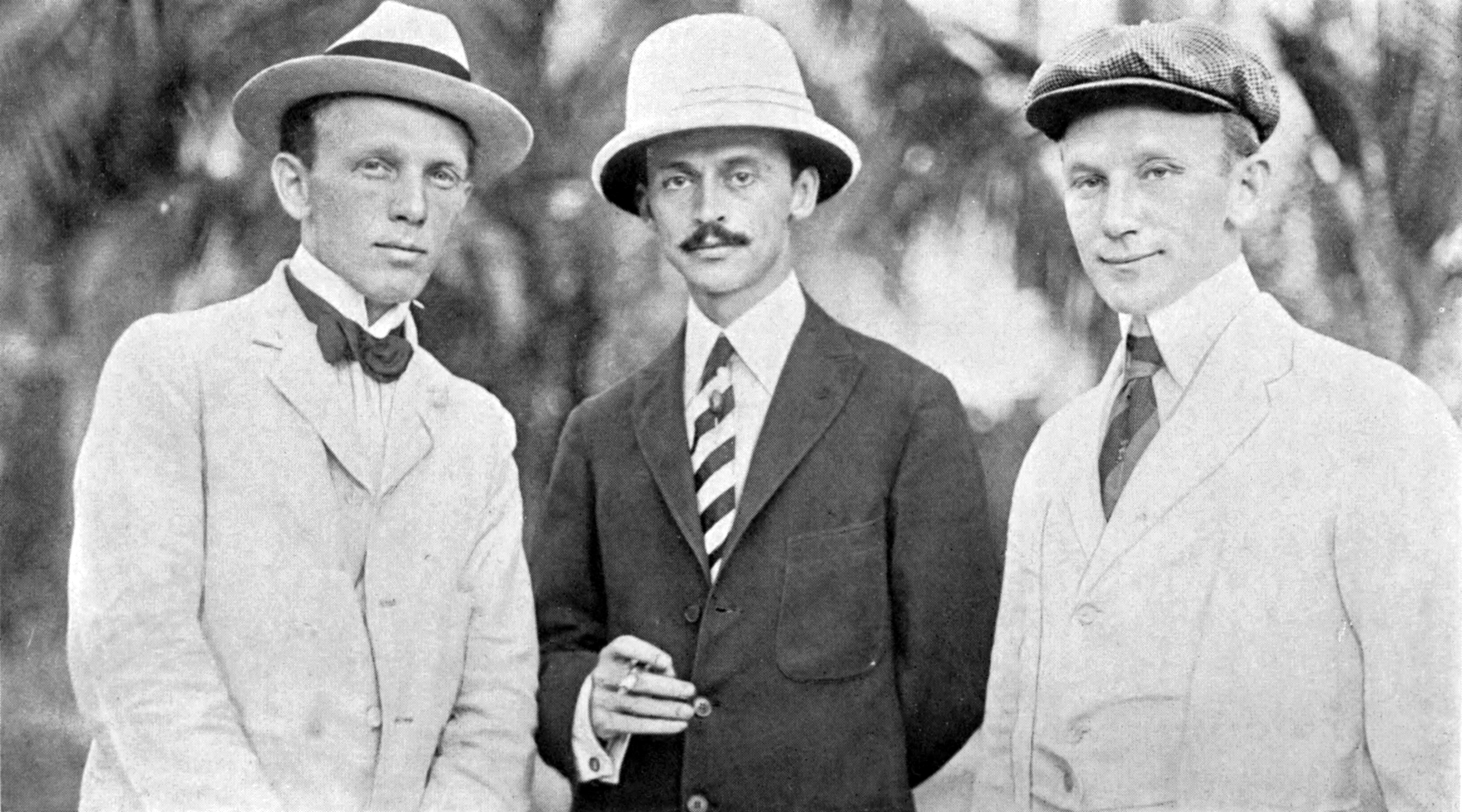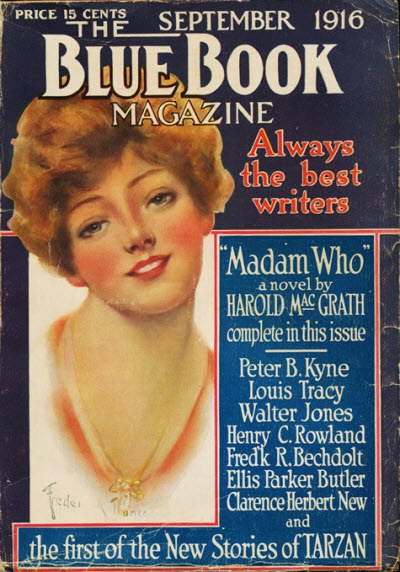|
The Million Dollar Mystery
''The Million Dollar Mystery'' is a 23-chapter film serial released in 1914, directed by Howell Hansel, and starring Florence La Badie and James Cruze. It is presumed lost. Plot A prologue for ''The Million Dollar Mystery'' introduced the characters and groups. After the opening title card shows "hundreds of hands" grasping for the money and then a shot of the check for $10,000 the solver of the mystery is shown prior to the beginning of the first reel. Baby Florence is left at a boarding school with a note and half a bracelet instructing that her father will come to take her back upon her eighteenth birthday. Hargreaves, here played by Alfred Norton, is chased by the Black Hundred, but he receives a note and money before attempting to escape by balloon on the top of a building. The balloon is shot down and the first chapter ends. Cast * Florence La Badie as Florence Hargreaves raised under the name "Florence Gray" * Albert Norton as Stanley Hargreaves, Florences' father. ... [...More Info...] [...Related Items...] OR: [Wikipedia] [Google] [Baidu] |
James Cruze
James Cruze (born Jens Cruz Bosen;Sadoul, Georges (1972). Dictionary of Films'. Berkeley, CA: University of California Press. p. 53. . See also: * Parish, James Robert; Pitts, Michael R. (1974). Film Directors: A Guide to Their American Films'. Metuchen, NJ: The Scarecrow Press. p. 84. . * Katchmer, George (July 1, 1981)"More Forgotten Cowboys and Cowgirls" ''Classic Images, No. 76''. p. 17. Retrieved June 13, 2023.Tully, Jim (January 29, 1929)"James Cruze, Erstwhile Hobo: Director of The Covered Wagon' Was in Turn Roustabout, Waiter and Ham Actor" ''Hartford Courant''. p. E3. "He is heavily muscled, broad-shouldered and leonine. As simple as a child, he is as deep as the riddle of life. His real name is Jens Cruze Bosen. He is the son of a Mormon Danish immigrant—a fanatic who settled in Utah as a follower of Brigham Young." Retrieved June 13, 2023. [...More Info...] [...Related Items...] OR: [Wikipedia] [Google] [Baidu] |
New Rochelle, New York
New Rochelle ( ; in ) is a Political subdivisions of New York State#City, city in Westchester County, New York, Westchester County, New York (state), New York, United States. It is a suburb of New York City, located approximately from Midtown Manhattan. In 2020, the city had a population of 79,726, making it the 7th-largest city and 22nd-most populous municipality in New York. History 17th and 18th centuries This area was occupied by cultures of indigenous peoples for thousands of years. They made use of the rich resources of Long Island Sound and inland areas. By the 17th century, the historic Lenape bands, who spoke a language in the Algonquian family, were prominent in the area. Their territory extended from the coastal areas of western present-day Connecticut, Long Island and south through New Jersey, Maryland and Delaware. In 1654, the Siwanoy Indians, a band of Lenape (also known as the Delaware by English colonists), sold land to English settler Thomas Pell. So ... [...More Info...] [...Related Items...] OR: [Wikipedia] [Google] [Baidu] |
White Star Line
The White Star Line was a British shipping line. Founded out of the remains of a defunct Packet trade, packet company, it gradually grew to become one of the most prominent shipping companies in the world, providing passenger and cargo services between the British Empire and the United States. While many other shipping lines focused primarily on speed, White Star branded their services by focusing more on providing comfortable passages for both upper class travellers and immigrants. Today, White Star is remembered for its innovative vessel and for the losses of some of its best passenger liners, including the wrecking of in 1873, the sinking of in 1909, the Sinking of the Titanic, loss of in 1912, and the wartime sinking of in 1916. Despite its casualties, the company retained a prominent hold on shipping markets around the globe before falling into decline during the Great Depression. White Star merged in 1934 with its chief rival, the Cunard Line, operating as Cunard-Whi ... [...More Info...] [...Related Items...] OR: [Wikipedia] [Google] [Baidu] |
Diving Bell
A diving bell is a rigid chamber used to transport divers from the surface to depth and back in open water, usually for the purpose of performing underwater work. The most common types are the open-bottomed wet bell and the closed bell, which can maintain an internal pressure greater than the external ambient. Diving bells are usually suspended by a cable, and lifted and lowered by a winch from a surface support platform. Unlike a submersible, the diving bell is not designed to move under the control of its occupants, or to operate independently of its launch and recovery system. The wet bell is a structure with an airtight chamber which is open to the water at the bottom, that is lowered underwater to operate as a base or a means of transport for a small number of divers. Air is trapped inside the bell by Hydrostatic pressure, pressure of the water at the interface. These were the first type of diving chamber, and are still in use in modified form. The closed bell is a pressur ... [...More Info...] [...Related Items...] OR: [Wikipedia] [Google] [Baidu] |
John Ernest Williamson
John Ernest Williamson (8 December 1881 – 15 July 1966) was an English filmmaker who invented the "photosphere" from which he filmed and photographed undersea. He is credited as being the first person to take an underwater photograph from a submarine. Biography He was born in Liverpool, England 1881 to Charles Williamson, a sea captain from Norfolk, Virginia. Charles had invented a deep-sea tube, made of concentric iron rings, "which stretched like an accordion". The tube was used for underwater repair and for ship salvage. In 1912 Williamson, while working as a reporter, used the device to make underwater photographs in Norfolk Harbor. He then expanded the photosphere, which he named ''Jules Verne'', and used it to create motion pictures, starting first in the Bahamas. Williamson created a film company, the Submarine Film Corporation. Their first feature film came out in 1914 and was entitled "Thirty Leagues Under the Sea" starring Williamson in a fight with a shark. The S ... [...More Info...] [...Related Items...] OR: [Wikipedia] [Google] [Baidu] |
Bahamas
The Bahamas, officially the Commonwealth of The Bahamas, is an archipelagic and island country within the Lucayan Archipelago of the Atlantic Ocean. It contains 97 per cent of the archipelago's land area and 88 per cent of its population. It comprises more than 3,000 islands, cays and islets in the Atlantic Ocean, and is located north of Cuba and north-west of the island of Hispaniola (split between the Dominican Republic and Haiti) and the Turks and Caicos Islands, southeast of the U.S. state of Florida and east of the Florida Keys. The capital and largest city is Nassau on the island of New Providence. The Royal Bahamas Defence Force describes the Bahamas' territory as encompassing of ocean space. The Bahama islands were inhabited by the Arawak and Lucayans, a branch of the Arawakan- speaking Taíno, for many centuries. Christopher Columbus was the first European to see the islands, making his first landfall in the "New World" in 1492 when he landed on the ... [...More Info...] [...Related Items...] OR: [Wikipedia] [Google] [Baidu] |
Carl Louis Gregory
Carl Louis Gregory (1882–1951) was an American cinematographer and director. Early life Carl Louis Gregory was born in Walnut, Kansas, in 1882. He ventured into photography while he was 11 years old. He grew up in Geneva, Ohio, the only boy among many sisters, two of whom, Anne (Anna) and Fana (Fanny) would later act in his silent films. He received degrees in pharmacy and chemistry from the Ohio State University in 1902 and 1904, respectively. He left the Thanhouser Company of New Rochelle to head Feature Film Manufacturing Co. in 1912, based on City Island, NY. (The Bioscope, June 27, 1912) He developed an optical printer in 1920 and as a result, his technical expertise was highly valued. Career Gregory was senior cameraman for the first major Thanhouser release, ''St. Elmo''. He photographed stills for a couple of advertisements. Gregory was the head instructor at the U. S. Signal School of Cinematography at Columbia University. He also filmed the 1914 serial called ''The ... [...More Info...] [...Related Items...] OR: [Wikipedia] [Google] [Baidu] |
Iridescence
Iridescence (also known as goniochromism) is the phenomenon of certain surfaces that appear gradually to change colour as the angle of view or the angle of illumination changes. Iridescence is caused by wave interference of light in microstructures or thin films. Examples of iridescence include soap bubbles, feathers, butterfly wings and seashell nacre, and minerals such as opal. Pearlescence is a related effect where some or most of the reflected light is white. The term pearlescent is used to describe certain paint finishes, usually in the automotive industry, which actually produce iridescent effects. Etymology The word ''iridescence'' is derived in part from the Greek word ἶρις ''îris'' ( gen. ἴριδος ''íridos''), meaning ''rainbow'', and is combined with the Latin suffix ''-escent'', meaning "having a tendency toward". Iris in turn derives from the goddess Iris of Greek mythology, who is the personification of the rainbow and acted as a messenger of th ... [...More Info...] [...Related Items...] OR: [Wikipedia] [Google] [Baidu] |
Lucy, Lady Duff-Gordon
Lucy Christiana, Lady Duff-Gordon (née Sutherland; 13 June 1863 – 20 April 1935) was a leading British fashion designer in the late 19th and early 20th centuries who worked under the professional name Lucile. The first British-based designer to achieve international acclaim, Lucy Duff-Gordon was a widely acknowledged innovator in couture styles as well as in fashion industry public relations. In addition to originating the "mannequin parade", a precursor to the modern fashion show, and training the first professional models, she launched slit skirts and low necklines, popularized less restrictive corsets, and promoted alluring and pared-down lingerie. Opening branches of her London house, Lucile Ltd, in Chicago, New York City, and Paris, her business became the first global couture brand, dressing a trend-setting clientele of royalty, nobility, and stage and film personalities. Duff-Gordon is also remembered as a survivor of the sinking of the RMS ''Titanic'' in 1912, an ... [...More Info...] [...Related Items...] OR: [Wikipedia] [Google] [Baidu] |
Couturier
(; ; French for 'high sewing', 'high dressmaking') is the creation of exclusive custom-fitted high-end fashion design. The term ''haute couture'' generally refers to a specific type of upper garment common in Europe during the 16th to the 18th century, or to the upper portion of a modern dress to distinguish it from the skirt and sleeves. Beginning in the mid-nineteenth century, Paris became the centre of a growing industry that focused on making outfits from high-quality, expensive, often unusual fabric and sewn with extreme attention to detail and finished by the most experienced and capable of sewers—often using time-consuming, hand-executed techniques. ''Couture'' translates literally from French as "dressmaking", sewing, or needlework and is also used as a common abbreviation of ''haute couture'' and can often refer to the same thing in spirit. Terminology In France, the term ''haute couture'' is protected by law and is defined by the '' Paris Chamber of Commerce'' ... [...More Info...] [...Related Items...] OR: [Wikipedia] [Google] [Baidu] |
Francis Wilson (actor)
Francis Wilson (February 7, 1854 – October 7, 1935) was an American actor and founding president of the Actors' Equity Association. Career Wilson was born in Philadelphia, Pennsylvania. He began his career in a minstrel show with Haverly's United Mastodon Minstrels, but by 1878 was playing at the Chestnut Street Theatre, Philadelphia, and the next year appeared in ''M'liss'' with Annie Pixley. After several years in regular comedy, he took up some comic opera, appearing with the McCaull Comic Opera Company and making a great success in '' Erminie'' (1886). In 1889, leaving New York's Casino Theatre, he made his appearance as a star in '' The Oolah''. Plays in which he starred subsequently include '' The Merry Monarch'' (1890); ''The Lion Tamer'' (1891); ''The Little Corporal'' (1898); '' The Strollers'' (1901); ''The Little Father of the Wilderness'' (1905); 'nd ''The Bachelor's Baby'' (1909), which he also wrote. He also appeared in several productions of Rip Van ... [...More Info...] [...Related Items...] OR: [Wikipedia] [Google] [Baidu] |
Harold MacGrath
Harold MacGrath (September 4, 1871 – October 30, 1932) was a bestselling and prolific American novelist, short story writer, and screenwriter. He sometimes completed more than one novel per year for the mass market, covering romance, spies, mystery, and adventure. He was the first nationally known writer to be commissioned to write original screenplays for the new film industry. In addition, he had eighteen novels and three short stories adapted as films, in some cases more than once. Three of these novels were also adapted as plays that were produced on Broadway in New York City. MacGrath traveled extensively but was always based in Syracuse, New York, where he was born and raised. Biography Born Harold McGrath in Syracuse, New York, he was the son of Thomas H. and Lillian Jane McGrath.MAC GRATH, HAROLD in ''< ... [...More Info...] [...Related Items...] OR: [Wikipedia] [Google] [Baidu] |








